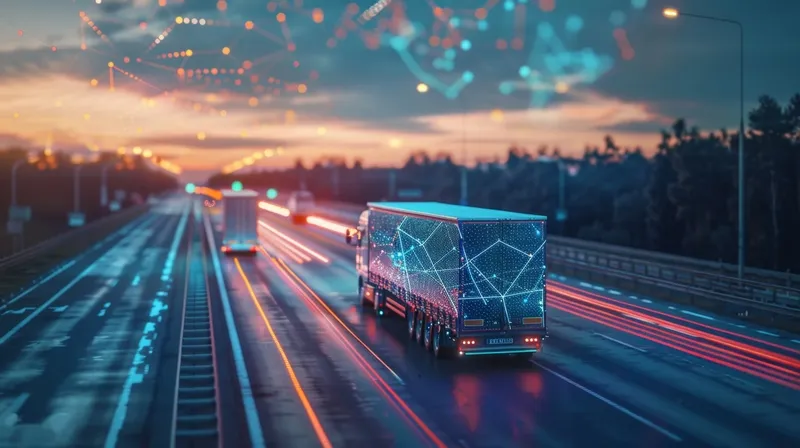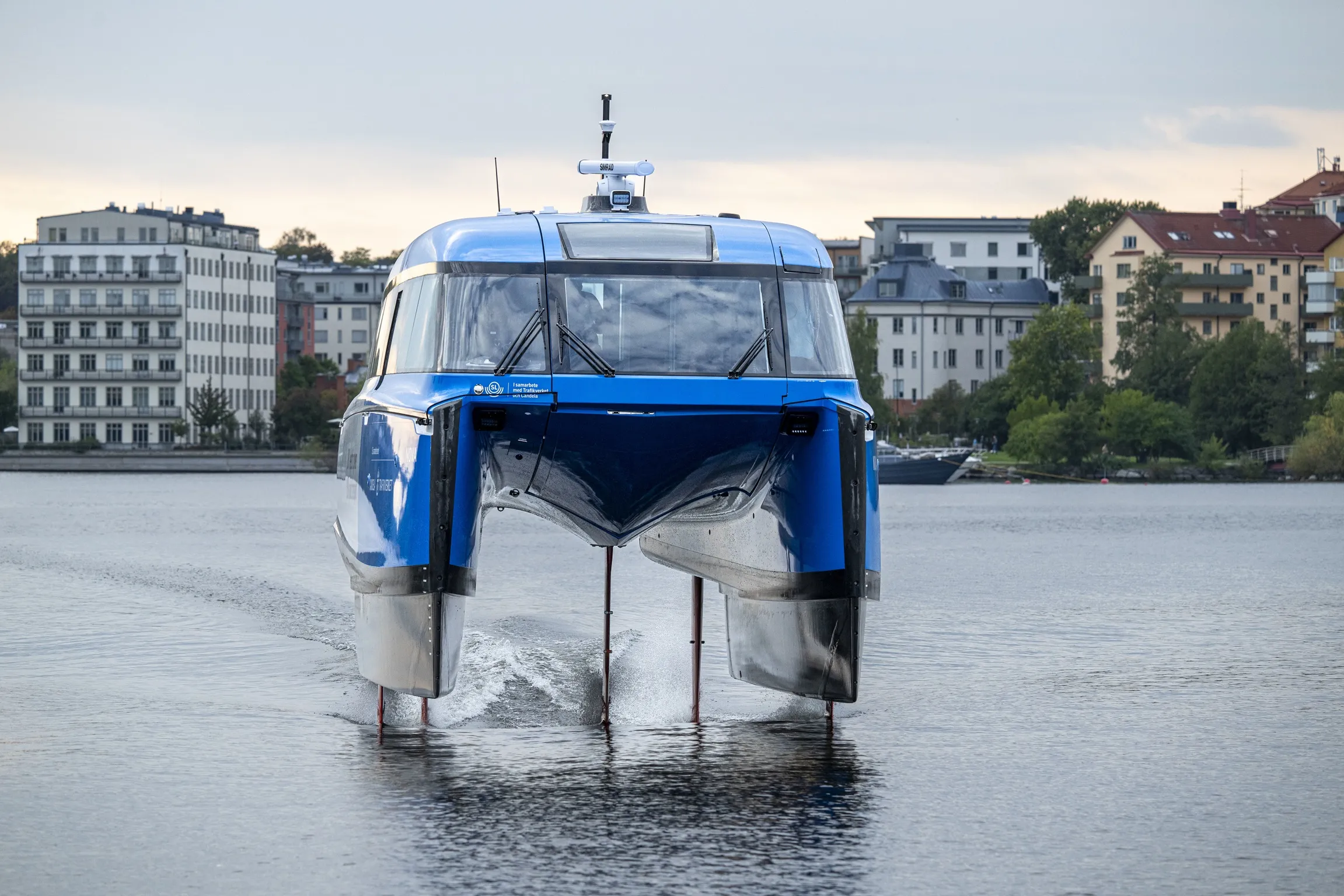
David Cornu, head of business unit traffic solutions, Kistler

AI is poised to drive further developments in Weigh in Motion (WiM) systems. When dealing with large data sets, these technologies will have a significant impact. For example, a WiM system provides detailed information for each vehicle 24/7, including vehicle class, axle loads, gross weight and speed. Kistler’s most advanced WiM digital system now offers even more information, such as tyre status (underinflated or flat), driving position in the lane, and driving behavioUrs (acceleration, deceleration). Currently, most of this data has a single and punctual use. However, the potential of AI is waiting to be unleashed here—predictive models can be established, and traffic patterns can be estimated in a much more advanced way than today. Authorities can interrogate these large data sets with very specific questions, such as identifying spots and reasons for increased traffic safety issues related to flat tires, speeding, lane changes, overloading, etc. We see much potential for transportation professionals and road authorities to better capitalise on the tons of information generated by a network of WiM systems. On the other hand, when investigating one of the major trends in WiM — the automated enforcement of overloaded vehicles — the application of AI becomes challenging. In this use case, the interest of the user is not related to traffic in general but to individual vehicles. If a vehicle does not comply with legal weight limitations, an automatic penalty will be triggered. This requires a 100% validated measurement, which also necessitates legal certification of the equipment, with sensors, hardware and software. In this field, the AI approach and improving of results based on learning algorithms have less, and often no, acceptance by certification authorities compared to the classic approach following the laws of physics. The newest Kistler Digital WiM system computes weighing using advanced algorithms based on the laws of physics and was legally certified to the highest accuracy standards in the market (F5), from low- to high-speed. This is a good example of how the classic approach also still holds much potential to push technological advancement to the next level.
Leonardo Guerson, WiM product manager and application engineer, Intercomp
 For strain gauge strip sensors, which are mechanical assemblies engineered for long-term performance, AI-enhanced quality control has led to more precise manufacturing processes. Automated defect detection, predictive analytics and machine vision inspection ensure sensor consistency, reducing variability and enhancing long-term reliability. While AI is bringing clear improvements, many of these technologies have evolved from longstanding methodologies, now benefiting from greater automation and efficiency. Besides the manufacturing of WiM sensors and components, the WiM sector as a whole has advanced with AI. Many pre-existing methods for data processing, like dynamic weighing compensation algorithms, algorithm-based classification, and data quality checks can now be AI-driven, improving the quality of the data that is delivered to the end users. As AI continues to refine both manufacturing and data processing in the WiM sector, it builds upon proven methodologies, enhancing precision, efficiency, and reliability while ensuring long-term performance and data integrity.
For strain gauge strip sensors, which are mechanical assemblies engineered for long-term performance, AI-enhanced quality control has led to more precise manufacturing processes. Automated defect detection, predictive analytics and machine vision inspection ensure sensor consistency, reducing variability and enhancing long-term reliability. While AI is bringing clear improvements, many of these technologies have evolved from longstanding methodologies, now benefiting from greater automation and efficiency. Besides the manufacturing of WiM sensors and components, the WiM sector as a whole has advanced with AI. Many pre-existing methods for data processing, like dynamic weighing compensation algorithms, algorithm-based classification, and data quality checks can now be AI-driven, improving the quality of the data that is delivered to the end users. As AI continues to refine both manufacturing and data processing in the WiM sector, it builds upon proven methodologies, enhancing precision, efficiency, and reliability while ensuring long-term performance and data integrity.
Daniel Kneubühl, MD, Haenni Instruments
 AI has certainly played a transformative role in improving WiM technology, particularly in areas such as data processing. Machine learning algorithms have enhanced accuracy in vehicle classification and weight estimations, leading to better enforcement and road safety measures. However, alongside these advancements, there are significant challenges to consider—especially concerning legal metrology and regulatory compliance. The AI Act (Regulation (EU) 2024/1689) introduces stricter guidelines on the use of AI in high-risk applications, which could impact how AI-driven WiM solutions are deployed for law enforcement purposes. Ensuring compliance with legal metrology requirements remains a key concern, as AI-based systems must maintain traceability and reliability to be accepted in regulated environments. As AI continues to evolve, it is crucial to strike a balance between leveraging its benefits and adhering to legal frameworks. At Haenni, we closely monitor these developments to ensure our WiM solutions remain both innovative and compliant.
AI has certainly played a transformative role in improving WiM technology, particularly in areas such as data processing. Machine learning algorithms have enhanced accuracy in vehicle classification and weight estimations, leading to better enforcement and road safety measures. However, alongside these advancements, there are significant challenges to consider—especially concerning legal metrology and regulatory compliance. The AI Act (Regulation (EU) 2024/1689) introduces stricter guidelines on the use of AI in high-risk applications, which could impact how AI-driven WiM solutions are deployed for law enforcement purposes. Ensuring compliance with legal metrology requirements remains a key concern, as AI-based systems must maintain traceability and reliability to be accepted in regulated environments. As AI continues to evolve, it is crucial to strike a balance between leveraging its benefits and adhering to legal frameworks. At Haenni, we closely monitor these developments to ensure our WiM solutions remain both innovative and compliant.
Ping Wang, WiM R&D director, VanJee Technology Co
 Since 2022, the application of AI technology in the field of WiM has shown significant technological breakthroughs and scenario innovations. In response to the last time we talked about three major ‘bottlenecks’ for AI application in WiM, there are now different situations. First, we believe that with the continuous development of AI technology, many companies have begun to purposefully build WiM databases: we have established our own, and believe that the amount of data has been able to provide a data base for AI. Second, AI algorithms’ complexity - with the development of AI technology - has been gradually resolved. Third, there is still a contradiction with AI algorithms and metrological algorithms, which is why the VanJee team has not put AI technology into the core function of WiM at present. However, even though AI technology has not yet been used in the core function area of WiM, the VanJee team has gradually expanded the application of AI technology in the auxiliary function area. In our internal R&D process, high-precision Lidar combined with AI image recognition is utilised to accurately extract the vehicle model, axle number, and vehicle location to solve the problem of abnormal vehicle movement and lost vehicles in WiM systems. Meanwhile, it assists in weight estimation, analyses the changes in the road factors, vehicle driving habits, and the impact of these changes on the WiM system - and reduces the negative impacts of complex road conditions on WiM. We use AI search of vehicle images to solve the problem of vehicles with obscured or blurred licence plates that cannot be recognised. In addition, the VanJee team also actively cooperates with other organisations. In some provinces in China, we help metrology organisations to build inspection systems and use long-term application data to evaluate the data situation of WiM sites - to replace once-or-twice-a-year calibrations. And we are cooperating with the Ministry of Transportation in a pilot project to build a cross-regional overloading risk early warning platform to solve the problem of inefficiency in overloading enforcement. We can assume that the use of AI in WiM systems has become very common, but there is still some reverence for the core WiM function (weighing).
Since 2022, the application of AI technology in the field of WiM has shown significant technological breakthroughs and scenario innovations. In response to the last time we talked about three major ‘bottlenecks’ for AI application in WiM, there are now different situations. First, we believe that with the continuous development of AI technology, many companies have begun to purposefully build WiM databases: we have established our own, and believe that the amount of data has been able to provide a data base for AI. Second, AI algorithms’ complexity - with the development of AI technology - has been gradually resolved. Third, there is still a contradiction with AI algorithms and metrological algorithms, which is why the VanJee team has not put AI technology into the core function of WiM at present. However, even though AI technology has not yet been used in the core function area of WiM, the VanJee team has gradually expanded the application of AI technology in the auxiliary function area. In our internal R&D process, high-precision Lidar combined with AI image recognition is utilised to accurately extract the vehicle model, axle number, and vehicle location to solve the problem of abnormal vehicle movement and lost vehicles in WiM systems. Meanwhile, it assists in weight estimation, analyses the changes in the road factors, vehicle driving habits, and the impact of these changes on the WiM system - and reduces the negative impacts of complex road conditions on WiM. We use AI search of vehicle images to solve the problem of vehicles with obscured or blurred licence plates that cannot be recognised. In addition, the VanJee team also actively cooperates with other organisations. In some provinces in China, we help metrology organisations to build inspection systems and use long-term application data to evaluate the data situation of WiM sites - to replace once-or-twice-a-year calibrations. And we are cooperating with the Ministry of Transportation in a pilot project to build a cross-regional overloading risk early warning platform to solve the problem of inefficiency in overloading enforcement. We can assume that the use of AI in WiM systems has become very common, but there is still some reverence for the core WiM function (weighing).











